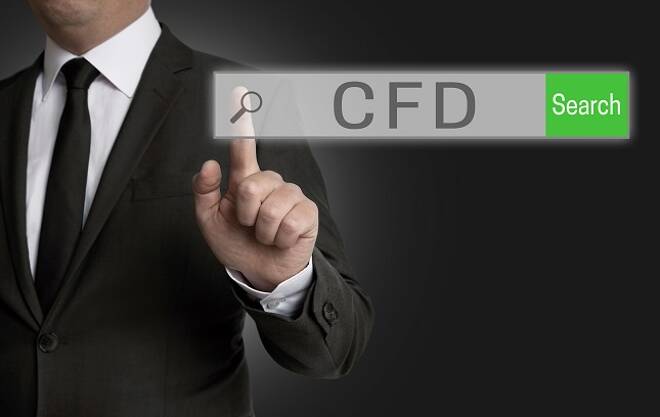Advertisement
Advertisement
CFDs: What Are They?
Updated: Dec 9, 2019, 16:10 GMT+00:00
Intro
CFD stands for “Contracts for Difference”. These are assets that are traded on the basis of the difference between the bid price and the ask price of the
CFD stands for “Contracts for Difference”. These are assets that are traded on the basis of the difference between the bid price and the ask price of the asset in question.
Tradable assets are quoted with two prices: the bid price and the ask price. The bid price is the price at which the dealer or broker will buy the asset from the trader, while the ask price is the price at which the dealer or broker will sell to the trader. So in a long trade, the execution price is done using the ask price, while executions are done on short trades at the bid price.
The difference between the bid and ask price is the spread. Profits or losses in CFD trades are measured in terms of the spread, and the number of units of the asset traded.
Characteristics of CFD Trades
What gives CFDs their characteristic features?
a) Non-ownership of Assets
In contrast to trading of stocks where the trader actually takes ownership of the asset, CFD instruments/assets are now owned. What is traded is merely the contract on the asset.
b) Spreads
The spread is the basis for the CFD asset. This is the difference between the bid price and ask price
c) Leverage
CFDs are leveraged financial products. This means that the CFD brokers provide matching funds which are greater than those of the trader for every trade placed on a CFD platform. This means that traders can control larger trades beyond what their capital can carry.
d) Large Potential for Profit or Loss
While it is possible to make huge gains as a result of the leverage provided, it is also possible to lose more than your initial capital. This is because a slippage may make the price of the asset to move against a stop loss so fast, it goes beyond the broker’s ability to fulfil it, causing a negative balance to be incurred. This is why CFD trading is classified as a risky investment.
e) Trade in Both Directions
CFD trades can be performed in rising or falling markets. Thus it may be possible to execute long positions to aim to profit in a rising market, or short positions to try to profit from a falling market.
How CFDs are Traded
CFDs may trade on an intraday basis, or on a longer term basis. Whichever trade style the trader adopts, the underlying principles are the same. CFD trading attempts to profit from rising prices with a long trade, or falling prices with a short trade. The number of pips that the asset moves multiplied by the lot size for the trade may determine the amount that has been made in profit, or the degree of loss sustained.
To start trading CFDs, the trader must open an account with a CFD broker. After undergoing an identity verification process which involves submission of a government-issued ID and a proof of address (utility bill or bank statement), the trader is issued with a username and password with which to login to the trading platform.
Risk warning: Forward Rate Agreements, Options and CFDs (OTC Trading) are leveraged products that carry a substantial risk of loss up to your invested capital and may not be suitable for everyone. Please ensure that you understand fully the risks involved and do not invest money you cannot afford to lose. The information provided can under no circumstances be considered as a recommendation to engage in any trade. Our group of companies through its subsidiaries is licensed by the Cyprus Securities & Exchange Commission (Easy Forex Trading Ltd- CySEC, License Number 079/07), which has been passported in the European Union through the MiFID Directive and in Australia by ASIC (Easy Forex Pty Ltd -AFS license No. 246566).
This article is a guest blog written by easy-forex
About the Author
Advertisement
